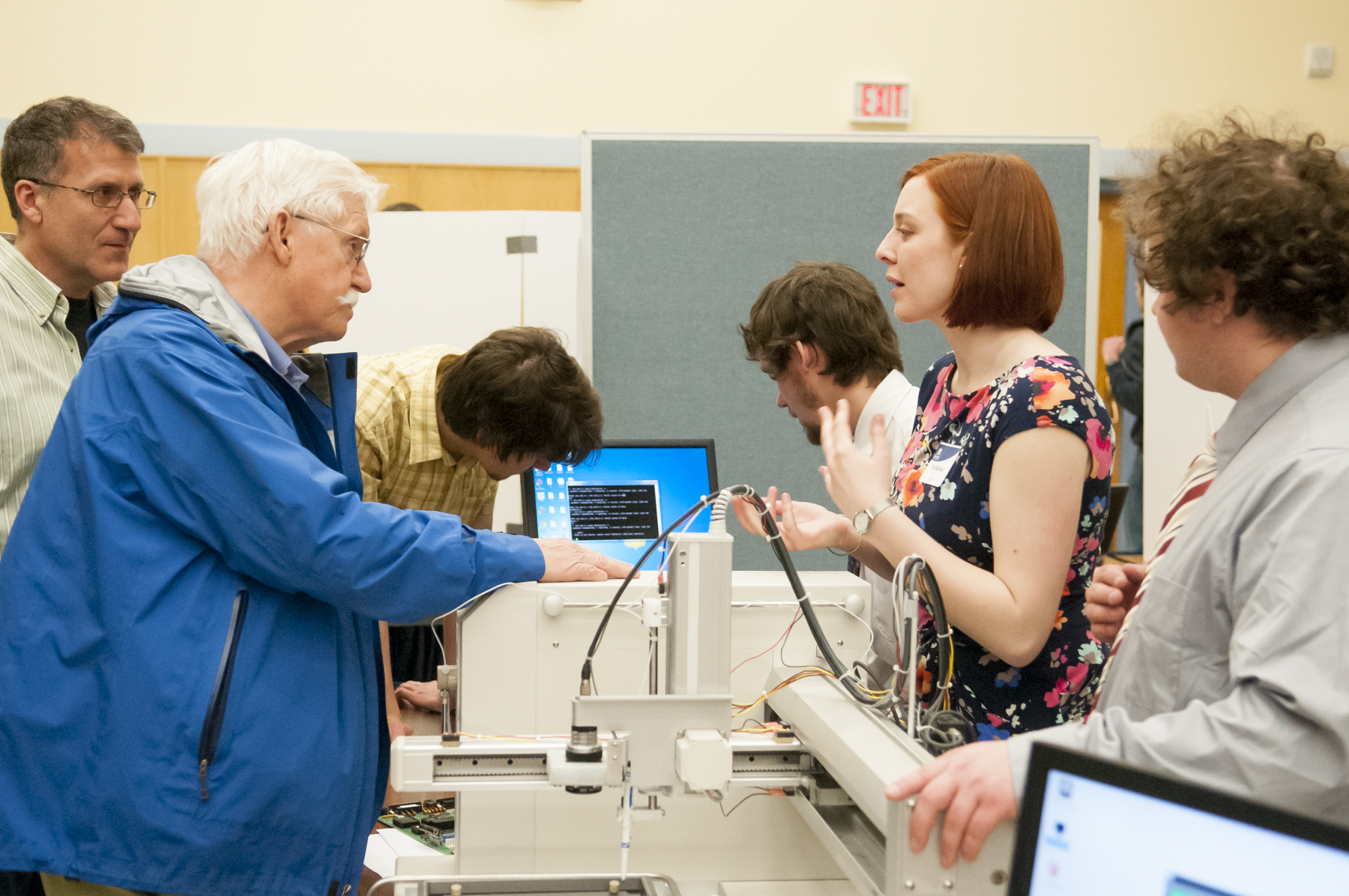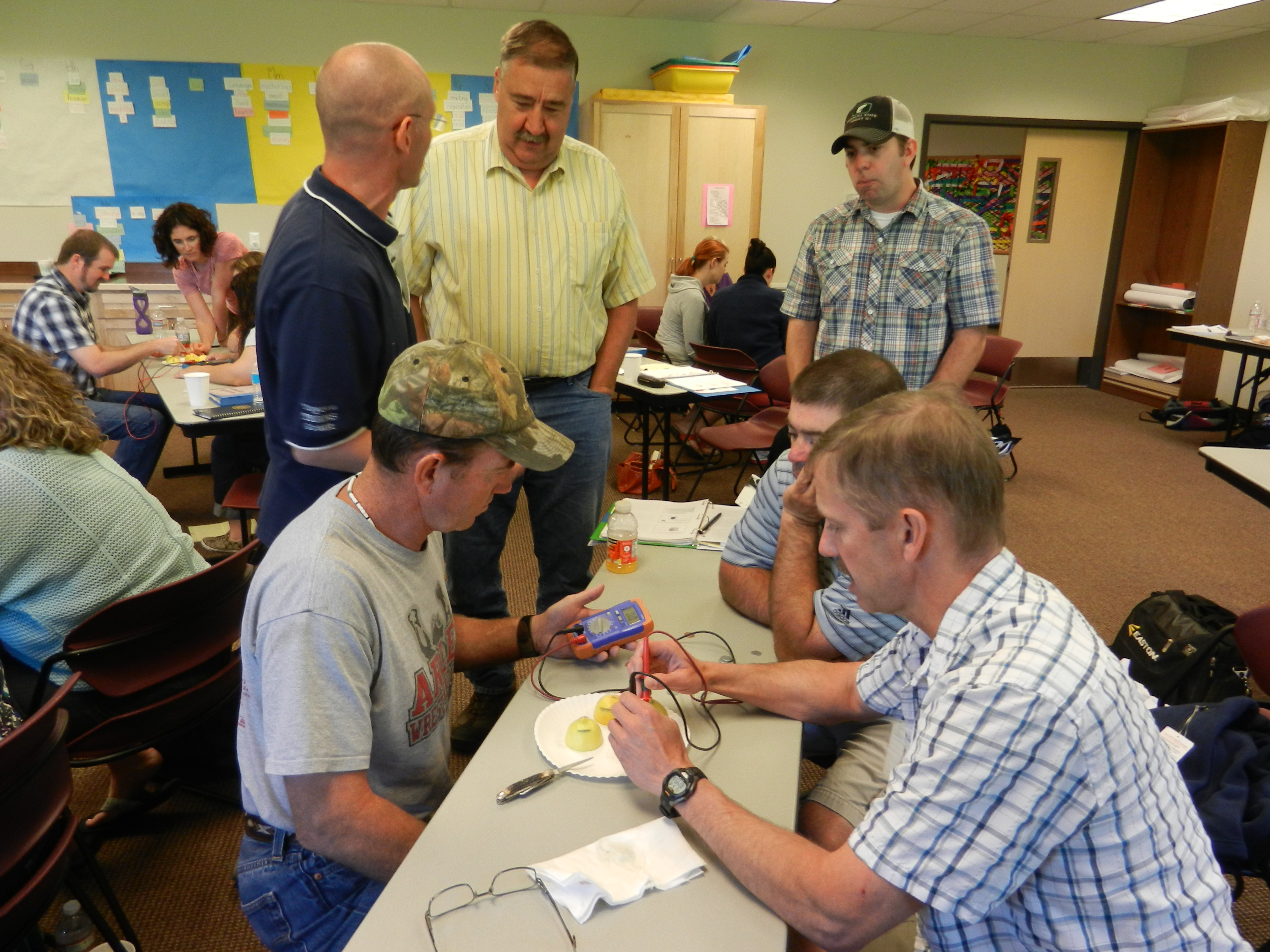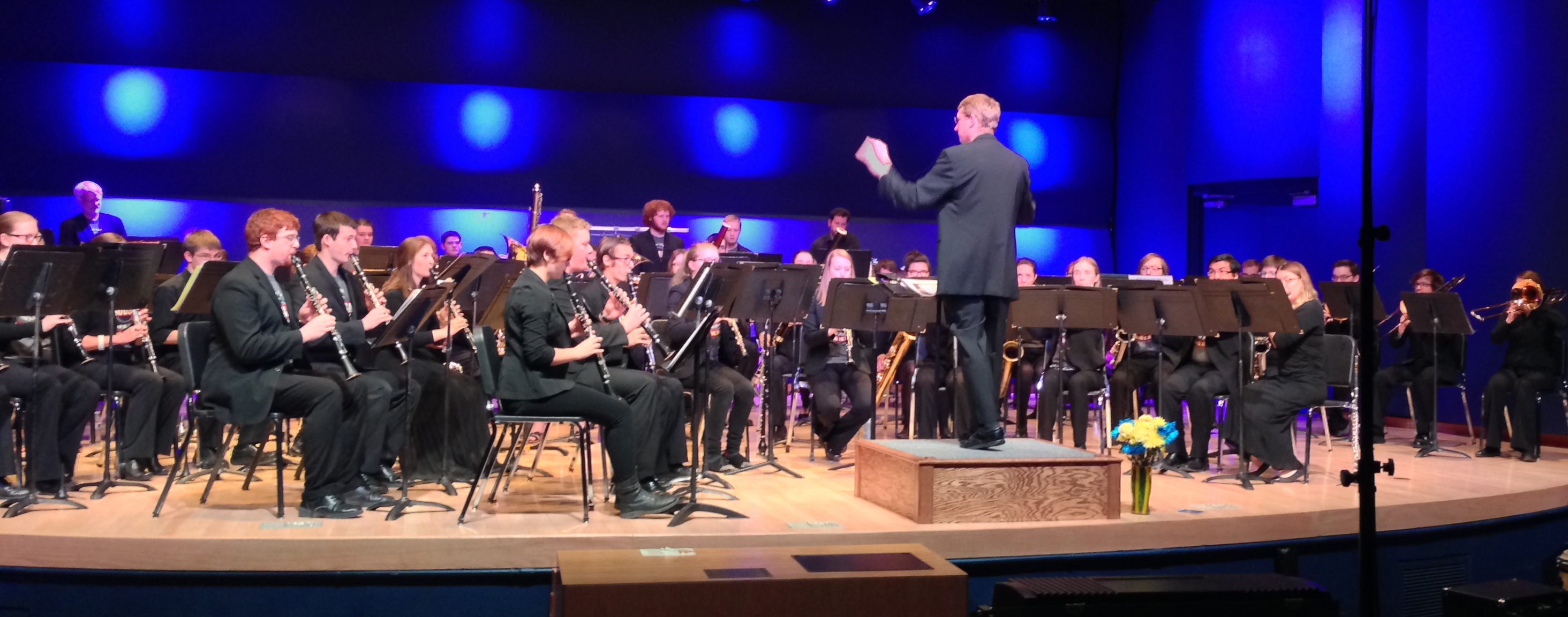Bobcat 4x4
Critique of Process and Prospects
R.C. Maher
Summary:
The planned 2018 summer school format for Montana State University is referred to as "Bobcat 4x4." It is a set of three summer sessions comprising 4 class days per week for 4 weeks (16 days of instruction). This format is significantly different from the conventional MSU semester format (15 instructional weeks) and the prior MSU summer school format (6 weeks or 12 weeks). The change to the 16-day format occurred without faculty discussion regarding student achievement or other academic evidence, but as part of a university plan to reduce instructional duration for reasons of efficiency and perceived convenience for students, staff, and faculty.

While it might be expected for a serious STEM university like MSU to first do a trial run with the 16-day format using a select group of courses, learn from the results, and then roll out an overall plan, the trajectory for MSU is to do an "all in" trial of this format for ALL courses, including the intensive calculus, physics, and chemistry courses that form the foundation of STEM education. This leap of faith is surprising, given the fact that virtually no other universities use a 16-day format, and those that do are a very select group of small colleges in the traditional liberal arts category.
Despite the lack of faculty input, the change has elicited only limited opposition, and the reasons for the apparent acquiescence of the faculty are interesting to contemplate.
This critique is offered to (1) identify the concerns regarding the process whereby this proposal was developed, (2) point out a variety of challenges that await the implementation of the 16-day plan, and (3) discuss the potential for summer school at MSU with a stronger and more sustainable academic basis.
My Disclaimer
I have no personal or professional stake in the MSU summer program. I have never
taught a summer course, and do not anticipate doing so in the near future. My department
does not have a significant role in offering summer classes. However, I believe very strongly in my obligation as a senior faculty member and dedicated academic advisor to help ensure that our
students are getting the best possible learning experience within our institutional
constraints. The Bobcat 4x4 16-day instruction mandate does NOT represent the best possible learning
experience for our intensive lab-based STEM classes like physics and chemistry.
Thus, I am writing this essay as a way to demonstrate what I think should be considered
a standard critical examination of academic decision-making at our university.
Although I am hopeful that other faculty will agree with me, or provide meaningful
rebuttal, the information and remarks presented here represent only my own viewpoint.
My views are not necessarily the views of my academic unit or my academic college.
I speak for myself.
It is my express intent to provide accurate information and interpretation. In the
event that at some point in the future I should receive new information, clarification,
and/or new documentation related to the Bobcat 4x4 plan, I reserve the right to amend
this report to include my findings and opinions based upon review of the new information.
RCM -- 2018 February 5
 Sections
Sections
1.1: Lack of Faculty Engagement
1.2: Lost Opportunities for Incremental Innovation
1.3: Inconsistency with Peer Universities
2.1: Poor Planning and Preparation
2.2: Plans Inconsistent with Principles of "Block Schedule" Courses
2.3: Flouting Curricular Integrity
2.4: Confusing Student Advising
3: General problems with the MSU summer session
Background
On Thursday, October 5, 2017, Provost Bob Mokwa sent a broadcast email to all faculty announcing that the summer session 2018 would be taught with three 4-week terms. The 4-week sessions would consist of four days of instruction per week (M-Th), or 16 class days total. Students would be allowed to take up to 6 credits in each 4-week period. Courses could also be offered on a twelve week basis. No other options (e.g. 6 weeks or 8 weeks) were contemplated.
This announcement did not come as a proposal seeking input, but as a fait accompli.
I note that the email included no mention of being motivated by improved student learning, improved academic achievement, or increased opportunity for faculty to develop new and innovative academic offerings. The rationale appeared to be (a) making summer credits more accessible and appealing to the students (marketing rationale), (b) providing summer on-campus housing (although not clear why the 4x4 enables this any more than a 6 week, 8 week, or 12 week format), (c) potentially shorten a 4-year degree to 3 or 3.5 years (although again it is not clear why the 4x4 is needed to enable this, compared to the status quo summer format).
We currently advise our students that academic work at MSU requires effort 7 days per week throughout the semester or summer. Our guidance is that students should multiply the number of credit hours by 3 to get a rough estimate of the expected clock hours required during the semester. For example, we would advise a student taking 15 credits during a 15 week semester that the expectation is 45 hours per week (675 hours for the semester) attending classes and labs, studying individually or in groups, doing course readings, etc. After being on the faculty at MSU for 15 years, this is the first time I recall that the summer effort is expected to be just 4 days per week (stated in first paragraph of the Provost's email).
Following receipt of this email, I sent a message to the Provost expressing my surprise that this major change would occur without discussion by Faculty Senate, or at least creation of a faculty Task Force to consider the pros and cons of such a change. I also sent email to several department head colleagues on campus whose departments deliver 4-credit intensive technical courses in the STEM fields to see if they were involved in the Bobcat 4x4 planning. I also sent email to the Faculty Senate leadership inquiring why this hadn't been reviewed by the Senate.
The responses that I received to my email messages were troubling for several reasons. The most prominent 'red flag' to me was the fact that none of the respondents were willing to go on the record with their comments. Several spoke with me on the telephone in what appeared to be a semi-confidential manner, and the Provost and Faculty Senate leadership also preferred to have telephone or face-to-face discussion rather than putting formal responses in writing.
 I then communicated via email with the Faculty Senate representatives from the College
of Engineering, asking if they had heard about the 4x4 plan, and if not, what they
thought could be done via the Senate to put the brakes on the proposal until a faculty
Task Force had the opportunity to review the objective evidence about academic achievement
under a 16-day format. A few replied, all indicating that the proposal was "news to
them," and no one recalled any discussion or debate being reported to the Senate.
I then communicated via email with the Faculty Senate representatives from the College
of Engineering, asking if they had heard about the 4x4 plan, and if not, what they
thought could be done via the Senate to put the brakes on the proposal until a faculty
Task Force had the opportunity to review the objective evidence about academic achievement
under a 16-day format. A few replied, all indicating that the proposal was "news to
them," and no one recalled any discussion or debate being reported to the Senate.
Then at the Faculty Senate meeting on October 18, 2017, I am told that the Bobcat 4x4 was presented as an "information item" that could not be argued under the Senate's parliamentary rules. Nonetheless, I am told that many Senators stood to make criticisms of the proposal. But because it was presented as an information item and not as a motion, evidently there was no opportunity for the faculty to stop the process for further examination. Again, the Bobcat 4x4 was a fait accompli.
Subsequent to the Faculty Senate meeting, I attempted to contact other faculty colleagues around the campus to form an ad hoc Task Force to study the process that led to the Bobcat 4x4, and to figure out how to put the proposal into hiatus until the faculty review was complete. As before, despite many private conversations in which colleagues from key department across campus voiced their serious concerns and skepticism about the 16-day class plan, I could find no one willing to go "on the record" with me to oppose the Bobcat 4x4 plan.
On November 23, 2017, the Provost's Office sent out a "Bobcat 4x4 Update" message that included the final schedule plan and some support opportunities for faculty who would be teaching in the 4x4 format. The message also included the names of an assessment committee: "This team will establish assessment metrics and methods, and develop an implementation plan for the assessment of all program components." Members of the team were David Singel, Elizabeth Burroughs, Kirk Branch, Steven Swinford, and Rob Maher.
While I certainly understand that each faculty member will choose his or her battles,
it troubled me to have colleagues who were clearly willing to oppose the plan vehemently
when off the record, but would not join me on the record. It is my opinion that some
of them felt bullied into acquiescence, while others felt that resistance was futile.
I find both of those excuses to be a sign of a bigger problem at MSU--more on that
later.
1: Concerns about PROCESS
The seemingly abrupt announcement of the Bobcat 4x4 plan begs many questions. What was the urgency to go "all-in" on the mandatory 16-day format? Which MSU faculty experts weighed in on the proposal? What alternatives were considered? What specific evidence was used to justify teaching intensive STEM classes with labs in a 16-day period? Why wasn't the MSU Faculty Senate engaged in the process?
1.1: Lack of Faculty Engagement
One of the key tenets of an institution with tenured faculty is that the faculty own the curriculum. This ownership is figurative in many respects, but it is based on the fact that the faculty are experts in the various fields of study and are therefore solely able to determine the body of knowledge and the breadth and depth of understanding that is necessary to be educated in that field. The faculty define the university through the curriculum, advising, mentoring, research, outreach, and the quality standards by which the work is judged. Self-regulation of and by the faculty establishes curricular standards and expectations. Certainly the university administration must be directly involved to identify priorities, manage the necessary bureaucracy, establish funding levels, and be good stewards of all available resources, but ultimately the setting of academic expectations and evaluation of student achievement rests upon the faculty.
At present at MSU, the academic schedule follows a traditional semester system. Existing courses and degree programs are defined and advertised under the seasonality of semesters. The collective experience of the faculty and students at MSU follows the sequence of academic semesters. The academic time and effort estimates revolve around the pace and duration of semester coursework.
The MSU summer program has traditionally been kept separate from the academic semester plan. Nearly every degree program is based on two academic semesters per year, with the summer being optional either as a way to make up for missing coursework or to "get ahead" on other academic requirements. Most of the research-active faculty use the summer months for work in the lab or the field, writing papers and proposals, and engaged in the research enterprise to a level not possible during the academic year. Therefore, the tenure-track (TT) faculty are simply disengaged from summer instruction, and summer classes have been left largely to non-tenure-track (NTT) faculty. Furthermore, the schedule has been 6 or 12 weeks rather than 15 weeks, so the pace and format of most classes differs markedly between the regular semesters and the summer term.
Since most TT faculty have no connection to the summer teaching obligations, university policies about summer teaching remuneration, calendar deadlines, decisions about what courses to offer, etc., are essentially irrelevant to most of us. Other than the need to help academic advisees decide whether or not to take summer classes, the existence of a summer program is pretty much invisible.
When the Bobcat 4x4 plan was announced, most TT faculty didn't seem to notice. I suspect this is because they knew the change wouldn't mean any difference to their own activities: summer school is pretty much invisible. When I approached several senior faculty colleagues across campus about why they were not up-in-arms about the Bobcat 4x4 plan, they expressed frustration about the lack of faculty input, but seemed resigned to the fact that:
"The upper administration wants it, so it's going to happen whether I like it or not. Complaining about it won't change anything. Besides, none of the TT faculty in my department teach in the summer anyway, so the NTT will have to figure it out. It won't affect me."
While this attitude partially explains the collective shrug the faculty have given to the Bobcat 4x4, I think it should be alarming to the faculty leadership and our administration. The institution is weakened whenever the role and importance of the faculty is diminished, and hearing faculty comments that "nothing can be done" or "it won't affect me" is a harbinger of isolation and non-collegial attitudes.
1.2: Lost Opportunities for Incremental Innovation
 As a STEM university, MSU has many courses and degree programs in the field of engineering.
People who do not have formal engineering education sometimes think that engineering
is mostly about trial and error: think up some new concept, build a prototype, and
then see if it works. This trial and error approach is sometimes used in engineering
experimentation, but nowadays it is almost always done only as a small model or laboratory
experiment, not as a large-scale implementation strategy.
As a STEM university, MSU has many courses and degree programs in the field of engineering.
People who do not have formal engineering education sometimes think that engineering
is mostly about trial and error: think up some new concept, build a prototype, and
then see if it works. This trial and error approach is sometimes used in engineering
experimentation, but nowadays it is almost always done only as a small model or laboratory
experiment, not as a large-scale implementation strategy.With accepted engineering principles in mind, the Bobcat 4x4 should have been developed incrementally by having a set of 16-day test courses that would allow interested faculty and students to try out the new instructional format, experiment with different schedules and instructional materials, and then report back to the faculty about the strengths, weaknesses, and challenges of a 16-day format. In other words, good engineering practice would have been to keep the regular 6-week / 12-week Summer 2018 format, while experimenting with a set of special 4x4 courses that would overlap the two 6-week sessions. I bet we could have found several “early proponents” who would truly want to experiment with the 16-day format, like REALLY taking advantage of the longer daily contact opportunities to do innovative, one-of-a-kind things, and create some boutique courses that would draw summer students from far and near to Bozeman.
I believe we should be doing a solid set of immersion experiments on a controlled and limited basis this summer, analyze the results, then put it to a faculty decision about how to proceed for full implementation at some point in the future. In the meantime, our existing students would be served using the standard 6-week summer lecture+lab model to which we are accustomed.

1.3: Inconsistency with Peer Universities
A common question in curricular matters is "what is the sense of the larger academic community outside MSU?" Proposals for new degree programs and instructional strategies are generally expected to have examples of success at peer institutions in neighboring states, and proposals often refer to similar institutions around the country--including "aspirational peers" such as schools a few rungs higher on the Carnegie classification ladder. As far as I can tell, MSU did no review of this kind regarding the 16-day format.
Let's consider an intensive STEM class taught at MSU and essentially all comparable universities: CHMY 141, the introductory chemistry course for STEM students. CHMY 141 is taught at MSU in a 4-credit format for a semester, including three 50-minute lecture sessions and one 170-minute laboratory each week.
In past years CHMY 141 at MSU has also been taught in the summer with a 6-week format comprising: four 65 minute lectures (MWRF), one 140 minute (2h20m) additional lecture (T), and two 215 minute (3h35m) lab sessions (MW). I am confident asserting that any MSU professor would recognize the effort expected in summer 6-week CHMY 141 as intense: class meetings five days per week, and total scheduled class time at 830 minutes (nearly 14 hours). The total in-class time for CHMY 141 is about 80 hours whether taken in either a 15-week semester or a 6-week summer session. And whether 15-week or 6-week format, the students are also expected to study outside of class time, prepare problem solutions and lab reports, etc.
I took a bit of time recently to look at several universities around the U.S. that teach a course equivalent to MSU's CHMY 141 College Chemistry I in a shortened summer format. Here is what I found out.
| School | Summer Chemistry (equiv. 141 4 cr w/ lab) | Term weeks | Semester Credits |
| Boston University | CH 101 | 6 | 4 |
| Clemson University | CH 101 | 6 | 4 |
| Colorado State | CHEM 111+CHEM 112 | 8 | 4 |
| Cornell University | (offers equiv of CHMY 121, not 141) | 6 or 4 | 4 |
| Kansas State Univ. | CHM 210 | 8 | 4 |
| Maryland | CHEM 131 + CHM 132 | 6 or 8 | 4 |
| Mississippi State | CH 1213 | 5 | 4 |
| New Mexico State Univ. | CHEM 111 | 5 | 4 |
| Oregon State | CH 231 + CH 261 (NOTE: QUARTER SYSTEM) | 4 | 5 q = 3.3 cr |
| Univ. of Idaho | CHEM 111 | 6 | 4 |
| Univ. of Pennsylvania | CHEM 101 + recitation | 6 | 4 |
| Univ. of Virginia | CHEM 1410+CHEM1411 | 4 (5 days/wk) | 4 |
| Univ. of Wyoming | CHEM 1020 | 6 | 4 |
| Utah State | CHEM 121 | 7 | 4 |
| Washington State | CHEM 105 | 8 | 4 |
I note that the general pattern for summer chemistry is 6 weeks at 5 days per week, with an assumption that students were studying 7 days a week, just like during a regular semester. Some of our peers (Colorado State, Kansas State, Washington State) use 8 weeks for the summer. A few schools use 5x5, Oregon State is on the quarter system, but only the Univ. of Virginia (not an MSU 'peer school') appears to offer a full semester in 4 weeks--but even UVA assumes 7 days per week of study.
In short, the bottom line for my concern is that MSU is proposing to cram the 4-credit laboratory STEM classes into a 4x4 format that isn’t appropriate. Having MSU enforce a “one size fits all” 16-day format seems to be based upon dogma, not something that is advisable or common for these intensive courses.
2: Concerns about PROSPECTS
I am thoroughly unconvinced that it is advisable for a STEM research university to have intensive courses such as M 171 Calculus 1 (4 credits), PHSX 220 Physics I (4 credits including lab), or CHMY 141 College Chemistry I (4 credits, including lab), taught on the basis of 16 class days.
During a regular semester, instruction in these intensive courses typically comprises 45 lecture sessions and at least 12 lab sessions. Outside of class, students engage in reading assignments, do homework, prepare written laboratory reports, attend study sessions, and so forth. The 15 week semester experience requires upwards of 12 hours per week (180 effort-hours) to attend class and do all of the other required study tasks.
I have seen no evidence presented that the 180 effort-hours expected for a 4-credit course in a 15-week semester can be accomplished in 16 days. Simple division of 180 hours into 16 class days indicates that the student would be expected to spend 11.25 clock hours per day on their studies for 4 credits. I am incredulous that we can propose that anyone is able to study calculus or chemistry for 11 hours per day, day after day, and gain equivalent useful knowledge and experience to our conventional practice.
Worse, the Bobcat 4x4 plan doesn't stop there. The plan states that a student will be allowed to take not just 4 credits, but up to 6 credits in the 16 class days. That works out to nearly 17 clock hours of effort per day, if the student is expected to engage in the equivalent effort in clock-hours for 6 credits in a 15 week semester. I do not find that credible in any academic sense. The student will clearly be unable to devote that much effort, so the effective content learning will be curtailed accordingly.
Faculty around the world advise students NOT to expect to be able to “cram” for exams, because that strategy is not effective for long-term memory and academic success. The physical changes in the brain required for effective STEM learning simply take time. While I cannot claim to know the precise manner in which brain structure changes when learning complicated subjects like Calculus and Physics, I do know that there is a limit to the rate at which knowledge is gained, just like there is a physical limit to how quickly one can lose weight or how quickly one can train to run a competitive marathon.

2.1: Poor Planning and Preparation
In a separate conversation with the Provost, I was told that there ARE schools around the country that use the 4-week schedule even for intensive classes. The example schools I was given were Colorado College (Colorado Springs, CO: 2,000 students, 15% admission acceptance rate), University of Montana-Western (Dillon, MT: 1,500 students), and Cornell College (Mt. Vernon, IA: 1,000 students). These are small liberal arts format campuses. None of those schools is a STEM campus with intensive courses and prerequisite expectations, so it is inexplicable that a campus such as MSU would choose these relatively tiny colleges as the model. None of these schools prepares students for immediate progression into advanced science and engineering topics, and none would be considered a peer institution to Montana State University. As noted previously, our peer institutions such as Washington State University and Colorado State University offer intensive courses like calculus, physics, and chemistry during 8-week summer sessions, not 16 days.
While I understand the expediency and efficiency of wanting to make summer terms occupy 4x4 (16 days of instruction), I would like to see the bona fide education research evidence that supports the idea that students can learn a whole semester of, say, calculus in an intensive 4 week period. I think the evidence is that we don't really have good techniques for getting many students through a 15 week calculus course, much less doing it in 6 weeks, or now, 4 weeks! Moreover, these are the students who will appear in our advanced courses with inadequate preparation.
2.2: Plans Inconsistent with Principles of "Block Schedule" Courses
The proponents of the Bobcat 4x4 point to the existence of so-called "block schedule" colleges. Block schedule refers to an academic format in which students take a single course at a time for 3-4 weeks (a "block"), and then take another single course, and so forth sequentially, rather than taking four or five simultaneous courses as a full-time student in a semester schedule. Schools with block schedules do exist, but as noted above, they are a very peculiar niche in higher education, not a growing trend. As far as I know, block scheduling does not exist at other STEM universities.
On November 27, 2017, MSU hosted a presentation by Dr. Mike Siddoway, a math professor from Colorado College in Colorado Springs. Dr. Siddoway has taught at CC for many years, and is very experienced with the block schedule instructional format.
Dr. Siddoway gave a very enjoyable presentation. He suggested (and I agree) that MSU could take better advantage of our special location—Montana in the summertime—to create special and superior summer classes that would have broad appeal. Specifically, courses that would get students and faculty out of the classroom rut, and involve travel, hiking, camping, outdoor observations, rafting, etc.
He emphasized the importance of taking advantage of the students being in only one class at a time, and breaking the assumptions about start and stop times, lecture durations, etc. He explained that each course at CC is assigned its own classroom for the duration of the Block, and the instruction follows the needs, not the daily schedule.
This sounds great, but it is NOT what has been proposed for the MSU summer 4x4! MSU
will have a daily class lecture schedule—especially for courses with instructional
labs--and students will be allowed to take more than one class at a time (along with
probably a job, etc.).
Dr. Siddoway stated that the Block schedule was innovative, but I disagree with that
point. Perhaps he meant that it allowed innovation in a particular professor’s class.
The Block idea itself dates back to the “efficiency” era of education in the late
19th and early 20th century, so it is hardly innovative in the sense of being new.
Block scheduling has its few strong adherents, but they are very small outliers in
higher education, and not among the major STEM programs to which MSU aspires.
Dr, Siddoway explained that the Block format is NOT appropriate for all courses. He specifically mentioned that some classes do not work well in the brief immersion model, such as music instruction, learning a foreign language, and computer science. “Flexibility is needed,” he said. Clearly, he was NOT dogmatic that one size has to fit all. He further allowed that there are notable drawbacks to the Block schedule, like not having much connectedness among threads in the curriculum (physics is its own thing, differential equations is its own thing, writing is its own thing, chemistry is its own thing, etc.)
At MSU, our modern STEM curricula each semester emphasize the interconnectedness of
our disciplines, and our course sequences deliberately exploit this parallelism.
It is a strength, not a weakness.
Others criticize the Block format if extensive hands-on lab work is required, or if
time is needed to read and write lengthy works, and these are exactly the characteristics
of intensive STEM classes such as physics, chemistry, and calculus.
It is important to recognize--and Dr. Siddoway clearly acknowledged--that he has never taught at an R1 university, nor developed a professional STEM curriculum. He has been at Colorado College since the 1980s. His curricular experience reflects the type of coursework offered at a small liberal arts college—and there is absolutely nothing wrong with that—BUT it is NOT the situation at Montana State University in 2018.
His view is that a "discipline" is defined through working with a like-minded group
of fewer than 25 people at a college (he used his math class as an example), while
a modern research university like ours is built around looking outward for connections, not inward. The interesting problems of our time are not inside our disciplines, but at the
boundaries BETWEEN our disciplines. The Block schedule reflects the “one at a time”
view that has its adherents, but it is not our modern view of higher education in
STEM.
Moreover, Dr. Siddoway's concept of what constitutes “a class” and “a curriculum” is different than what we have here at MSU. In my field, for example, there are deep chains of prerequisite courses with connected learning outcomes. When I teach a required course in the upper division EE and CpE curricula (e.g., EELE 317 Electronics), the ~100 students in my class have previously studied M 171, M 172, M 274, PHSX 220, PHSX 222, EELE 101, EELE 201, and EELE 203. If one of those curricular elements is missing or was poorly studied, it matters. Our curriculum is not just a set of punches on a card after which the student gets the diploma prize. It is a deliberately constructed sequence of courses and experiences that lead to a desired goal.
Dr. Siddoway did not indicate whether he had any experience with MSU’s plan of having “versions” of courses such as M171 and PHSX220 taught in regular semester format, but then entirely different versions with the same course number taught in 16 days during the summer.
Unlike his statement that Block courses should be developed specifically to exploit the strengths and mitigate the weaknesses of the 4-week layout, MSU is instead taking existing courses like M-171, CHMY-141, and PHSX-220, and trying to cram them into a 16-day format. Our existing classes like calculus and physics aren’t really going to be able to go “free form” and still be proper, compatible prerequisites for the following courses. It is a poorly considered problem.
2.3: Flouting Curricular Integrity
As noted previously, the university's tenure track (TT) faculty are owners of the curriculum, and generally it is understood in shared governance that the faculty review three attributes of academic programs: quality, integrity, and sustainability.
Of greatest concern with the Bobcat 4x4 is its lack of integrity. The measure of integrity is that the academic program is well thought out, with honest consideration of strengths and weaknesses, examples of prior success upon which the program is built, comparison to similar programs at other reputable universities, and clear measures by which the program's quality can be gauged. The faculty are the ones who need to maintain the standard for integrity, and in the case of the Bobcat 4x4, the faculty were not even consulted.
One example is the name of the program: "Bobcat 4x4." This name explicitly states that the curriculum is delivered in the form of 4 days per week for 4 weeks, and the format is Monday-Thursday, followed by a 3-day weekend. If each instructional day of the 4x4 is roughly equivalent to one week in a 15-week semester, having a 3-day weekend is like a 3 week break in a regular semester. It has been stated that students will be expected to study and do course-related work on the 3-day weekend. If that is the case, the chirpy title "Bobcat 4x4" should be eliminated--or replaced with "4x7."
Second, the equivalence for a summer course bearing the same course number and learning outcomes must be between the body of material and learning experience gained in the one semester conventional course at MSU. That's our standard, like it or not, and any alternative method of instruction has to be measured against that convention. It may be interesting to argue about how best to clump knowledge into courses and credits, but that is not the point here. It is that M 171 with 4 credits means something tangible, like it or not, and so a 16-day version of M 171 is expected to be equivalent to the semester-long version if the curriculum is to have any integrity at all.
Third, any proposal from MSU Academic Affairs should start with increasing student learning and performance. MSU has faculty who are education experts from the math, physics, chemistry, and engineering departments, and these colleagues should be engaged to be the ones best equipped to determine the preferred course duration and format. Respect for the expertise of the faculty did not happen in the case of the Bobcat 4x4, because the faculty were TOLD what to do, not ASKED what would be best for increasing student learning and performance.
2.4: Confusing Student Advising
As an experienced academic advisor and former department head, a common question I
have heard over the years is: "Will taking summer classes help me graduate sooner?"
This question most often comes up when dealing with students who had a "DFW" (D grade, F grade, or Withdrew) in a required class, such as calculus or physics. A DFW outcome in a required
class means that the student will either retake the class, switch to another major
that doesn't require that class, or drop out of the university. [See MSU Barrier Courses Task Force Report (2013)]
Assuming the student isn't suspended, the advising appointment will generally include discussion of why the DFW happened, what would be different if the class was taken again, and what changes will need to occur with the student's academic plan. A student who earned a DFW in a 15-week version of calculus is now faced with the choice of retaking calculus in the next regular MSU academic term, retaking the course during the summer term--assuming the course is offered in the summer--or retaking an approved equivalent class at a different university and transferring the credits back to MSU.
The summer option for a student with a prior DFW may or may not be advised. We have to consider, given the student's prior DFW outcome, the likelihood that the student will actually learn the summer course material in a shorter span of time and succeed in passing the course. The student might also have to weigh the cost of maintaining a summer lease to live in Bozeman and pay tuition and fees through the summer vs. returning home, compared to the unknown eventual cost of an extra semester later on to finish up degree requirements--which may still be necessary even with the summer course taken now. And the student may have the possibility of a summer job or internship to earn money and to gain relevant and valuable hands-on experience.
The plan to switch to the 4x4 summer format makes this advising process even more confusing and fraught with risks, because instructors, advisors, and students have essentially zero experience with a 16-day semester format.
There are hopes that the concentrated format will appeal to some students, and certainly the course instructors will try to do their best, but as an advisor I have to use my best judgment and help my advisees weigh the costs, benefits, and risks. In the absence of experience, and lacking any authoritative information, I will NOT be recommending Bobcat 4x4 for my advisees unless they clearly understand that they will be guinea pigs in an experiement. It will have to be left up to the students to guess if this is a good choice.
As noted previously, there would have been a much better way forward: have only a select group of course sections set up in the 4x4 format, while the remainder of the summer curriculum was kept on the familiar format. After gaining a year or two of experience with the strengths and weaknesses of the 4x4 plan, only then would the faculty be asked to vote on the new formulation.

3: General problems with the MSU summer session
In my experience at MSU since 2002--and particularly in my experience as ECE Department Head from 2007-2017--the "summer session" at MSU has never been conceived, advertised, and budgeted in the manner of the regular academic semesters. Courses are offered using a "pay as you go" model: the various departments that offer summer classes do so based on the need to have sufficient students enrolled to cover the instructional costs from a share of the tuition paid. The economic formula has varied over the years, but generally each summer course accrued a fixed-dollar-per-student allocation, no matter what course was being taken and no matter which instructor and which department.
While funding instruction via tuition is a key part of the university's "business model" for the regular academic semesters, the course-by-course "pay as you go" concept is not used at MSU during the regular semesters. During the regular academic year, academic departments receive a budget to cover the salaries of the faculty, staff, and graduate teaching assistants. Some departments receive additional funding to hire NTT faculty, and some departments use external research dollars to pay a portion of a faculty member's salary (a "buy-out") and use the freed-up funds to hire NTT faculty. The faculty members are paid a salary, and the salaries of professors differ within a department and between different departments. This means that the cost for teaching each credit-hour differs within a department--and certainly between departments--depending upon the salary of whoever happens to be assigned to teach the class. MSU observes the instructional cost per credit hour using national survey data (Delaware data, for example).
Pay as you go?
I do not know what funding and payment formula is planned for the Bobcat 4x4. {updated April 2018: I am told that the payment formula for summer 2018 is $160 per student credit hour.}
In years in the recent past, the summer funding model has become less and less like the regular semester model. The current summer model pays the department offering a summer course a flat amount: $141 per student credit hour. This improbably-precise number is calculated somehow by the administration based on estimated tuition revenue and fixed costs. The fact that the average cost to staff a course in the different disciplines at MSU varies markedly is essentially ignored. The result is that departments have incentives to: (A) increase the size of summer classes, thereby increasing the SCH payment, and (B) find an instructor willing to work for the least amount of compensation. Incentive (A) is arguably a Good Thing, but doesn't take into account that summer classes involving laboratory instruction may have a practical cap on course size due to lab seats and availability. Incentive (B) is perhaps a good idea economically, but ultimately ends up utilizing the least experienced (i.e., cheapest) instructors, which may not be the best situation for struggling students.
In any case, the summer session formulation has several notable shortcomings, in my opinion.
(1) The format has always been different from the "regular" 15-week semesters, and now the 16-day summer format is COMPLETELY different, making it difficult to manage a curriculum if summer classes are to be used.
(2) The funding arrangements for summer make the academic considerations secondary to the financial realities. It is hard to argue that the university shouldn't worry about financial realities, but the summer arrangements are so different from the regular semester that it becomes more of a "fill the seats" exercise than our usual claim of trying to "do what's best for student learning."
(3) The odd format and economics of the summer session mean that instruction is delivered by non-tenure-track faculty to a greater extent than during the regular semester. The NTT emphasis is also due to the fact that research-active faculty in most STEM fields are expected to use their summer time focused upon research. MSU would slide in its research stature if faculty were spending more time in conventional teaching during the summer, so the primary way to teach summer classes is to have NTT faculty do the work. My concern is that the increasingly divergent format of the regular semesters and the summer session means that the TT faculty are less and less engaged in monitoring and supporting the summer instructional programs. Some balance must be struck between summer session teaching and summer TT faculty research.
The result is that the summer session has become a special "shadow university" that receives scant funding based upon credit hours, not the true cost of education. The incentive is to have lots of students and a cheap instructor, rather than matching the need with the best available instructor to enhance student accomplishment. The Bobcat 4x4 increases the shadow nature of the summer coursework, since it is such an outlier in format and structure compared to our instruction during the regular semesters.

A Cautionary Example
Several years ago, MSU began to allow academic units to teach courses through MSU Extended University. Extended University was originally intended for unconventional on-line instruction to off-campus clientele (many of whom were non-degree-seeking), and for specialized short-courses and outreach in a form different from the regular university curriculum, calendar, and degree programs.
Because Extended University operated separately from the tuition-sponsored regular academic operations of the campus, the EU unit could offer courses and hire instructors in a rather entrepreneurial manner. An MSU academic unit could strike a deal with Extended University to offer a course "at a profit" by splitting the course proceeds with the instructor and the unit. If the course was popular, this created a noticeable positive revenue stream that would more or less bypass the usual university budgetary processes.
As time went on it became known that an academic unit could offer a "shadow" version of an existing MSU class through Extended University, and thereby gain a direct funding stream from students who signed up for the EU class. Rather than having students sign up for, say, a Spanish class through the registrar, the course could be offered with the same course number through Extended University, and the offering unit would get a direct revenue stream instead of the standard pooled tuition funding used by the university itself.
Had this "shadow university" been allowed to continue, it was just a matter of time before each academic unit would create course versions through EU and steer students that way instead of to the regular university offerings. Fortunately, the university administration came to its senses and restructured the procedures for academic offerings, placing Extended University back into its original business of providing courses outside of the regular curriculum, not in competition with it.
Will Bobcat 4x4 follow a similar path, becoming a "shadow university" run as a separate business unit, yet still offering MSU-branded common course number classes? Will the NTT summer faculty be expected to do all of the 16-day course development on a self-funded basis, or will the academic units use their AY funding to enable the summer session classes? Has MSU thought through the predictable consequences of shifting the summer operations even farther away from the regular AY operations?
Unfortunately, I don't know the answers to these questions. Nonetheless, I do know that a better course of action would be to align the summer session more closely with the regular semesters. Our university would benefit from engaging all of our faculty in developing and strengthening all of our academic offerings, rather than further distancing the summer programs from the rest of our academic endeavors. I hope that the faculty and administration will forge a new direction in this regard. Unfortunately, the current summer plan has deliberately avoided faculty involvement.

